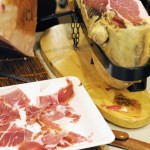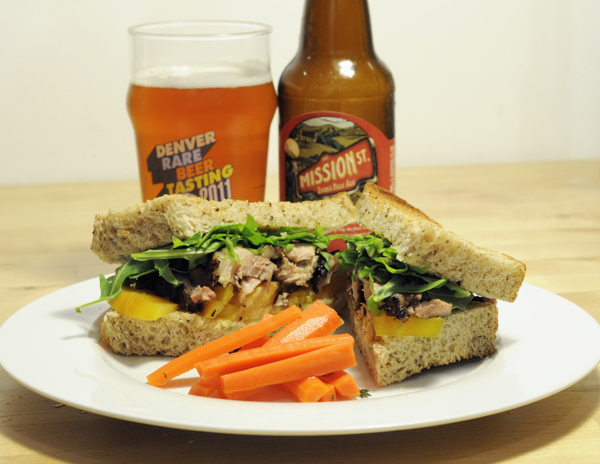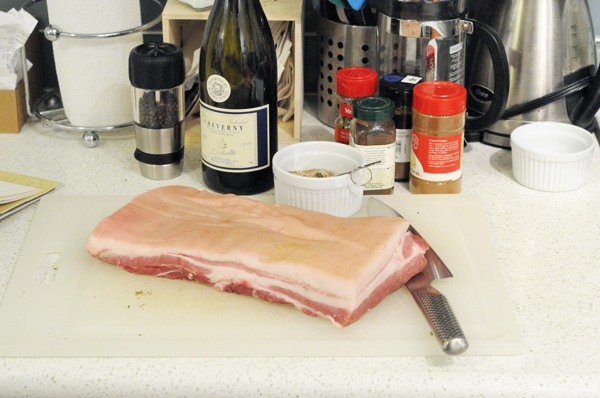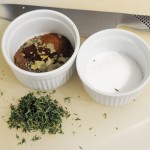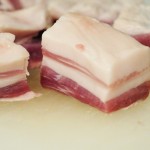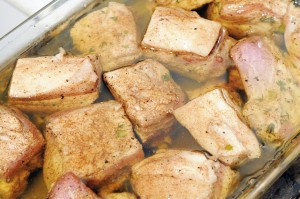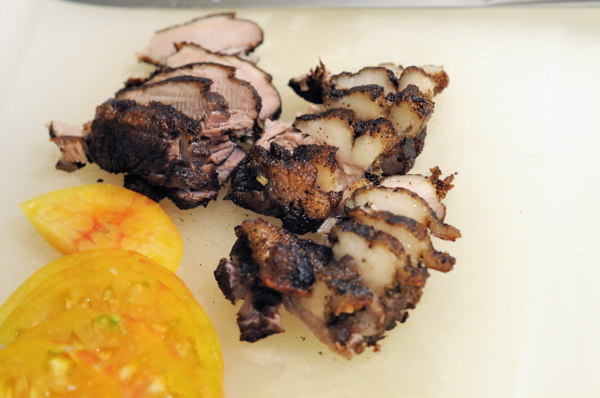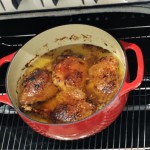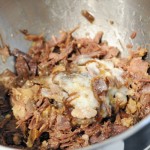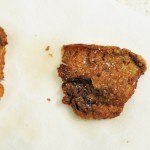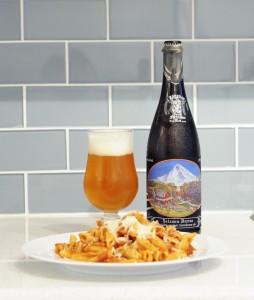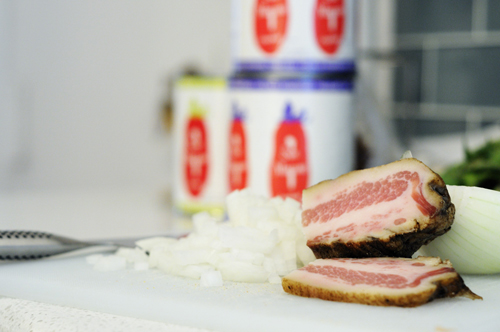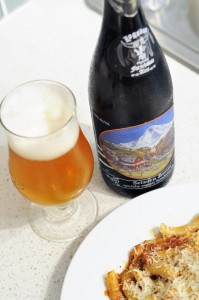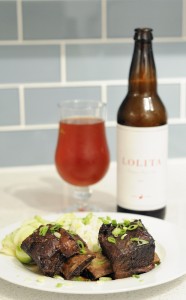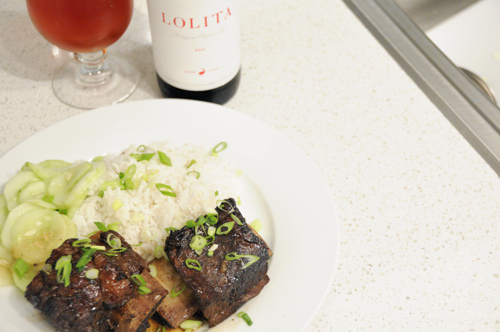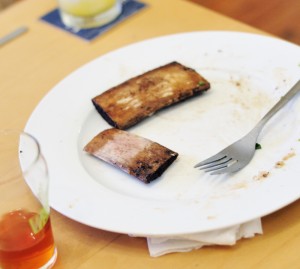Finding a foodie that is into pork is kind of like spotting a pair of skinny jeans in Williamsburg. Both can exist without the other, but when coupled, an easy synergy arises. It’s natural and comfortable. The popular ramblings of foodie gurus like Bourdain and Chang have placed the pig on a pedestal—and spawned more than a handful of pig-related tattoos. In spite of all that, I must admit that I, too, have consumed the pork-flavored Kool-Aid. Case in point, the plethora of pork posts I’ve written over the past year. It’s becoming a bit of a ‘thing’ for me so deciding whether or not to attend the pork-centric Cochon 555 was a no-brainer.

Participating Chefs (L-R): Frank Langello (Babbo Ristorante e Enoteca), Michael Toscano (Perla), Lauren Hirschberg (Craftbar), Seamus Mullen (Tertulia), and David Standridge (Market Table)
What is Cochon 555?
Cochon 555’s website bills itself as:
A one-of-a-kind traveling culinary competition and tasting event – five chefs, five pigs, five winemakers – to promote sustainable farming of heritage breed pigs.
Promote is the key word and their approach isn’t all that different from what you’d see from a music label promoting the next big thing. Just substitute “rock star” with “rock star chef.” Promoting sustainable farming is a lofty goal, but a bit of a red herring in this case. At the end of the day, this is a for-profit venture with a steep price. This event is really about promoting some kick-ass restaurants and other delicious products (while making a buck) by giving attendees the opportunity to try high-end food and drink and experiment with their own pairings all within a convivial festival format. Appreciating both parts of the equation sets the table for a good time.
What Worked
Walking into the space, there was an energy in the air. You could tell that people were excited to be there. While the floor was very crowded, there was a precious handful of standing tables and small, out-of-the-way niches where you could stow away and focus on the star of the event. The restaurants on display were well-chosen and diverse, offering a spectrum of food and a variety of styles. The flow of the evening was smooth — differing from other festivals by offering a variety of scheduled events throughout the evening, keeping things fresh.

Why yes, they did butcher an entire pig on the festival floor. The cuts were then individually auctioned off to benefit the CIA (Culinary Institute of America). There was something kinda bad-ass watching Sara Bigelow from The Meathook methodically break down an entire pig.
What Didn’t Work
Criticism is an important part of my writing and Cochon 555 left me with a number of critiques. I don’t like to dwell on the negatives, but when people are spending $125 for a general admission ticket ($200 for a VIP ticket), the bar is raised and things should be near flawless.
First off, it was crowded. Fighting your way through a sea of people only to be greeted by another wait to get food was a big letdown. I understand the need for a swanky event to have an equally swanky venue (Cochon 555 NYC was hosted at the Ritz-Carlton). Perhaps moving to a less expensive and more spacious venue would improve this without taking anything away from the event’s reputation. Even more disappointing is coming to a table with no food. Service for the majority of restaurants ended early — running out of food at an event of this caliber is unacceptable. Additionally, of the menus posted by each restaurant, I was only able to try about half of the dishes listed.
The majority of the pork dishes I tasted left me, quite frankly, a bit underwhelmed. The number of outrageously salty dishes was astonishing. Nearly all the pork felt overly fussy, complicated, and intense (and not always in a good way). I understand the urge to migrate towards bold flavors, but much of the food sacrificed nuance in the name of extremity. The pornographic amounts of truffle being thrown about was not only excessive, but felt somewhat desperate. In the end, two of my three favorite bites were swine-free.
What I was Looking For
Criticism aside, coming into this event, I had a clear vision of what I wanted to get out of it. Most of the culinary world (including this event) is enamored with pairing food and wine, and rightfully so. It’s easy. Wine’s typically dry nature, acidity, and tannic content make pairing it with food easy. A bit more challenging, and equally rewarding, is pairing food and beer. I’ve always thought that the diversity within beer style taxonomy offers an amazing spectrum of pairing opportunities. Goose Island’s choice to prominently sponsor a food event that mentions ‘wine’ in it’s tagline (and not beer) seemed a bit idiosyncratic. Talking with their representatives and learning about their goal of promoting beer and food helped resolve this seemingly odd match of brand and event.
Over the course of the evening, I ate and drank in a manner that would cause Elvis to blush. At the end of the night, three pairings stuck in my mind.
Pairing #1: Beef Tartare with Lolita
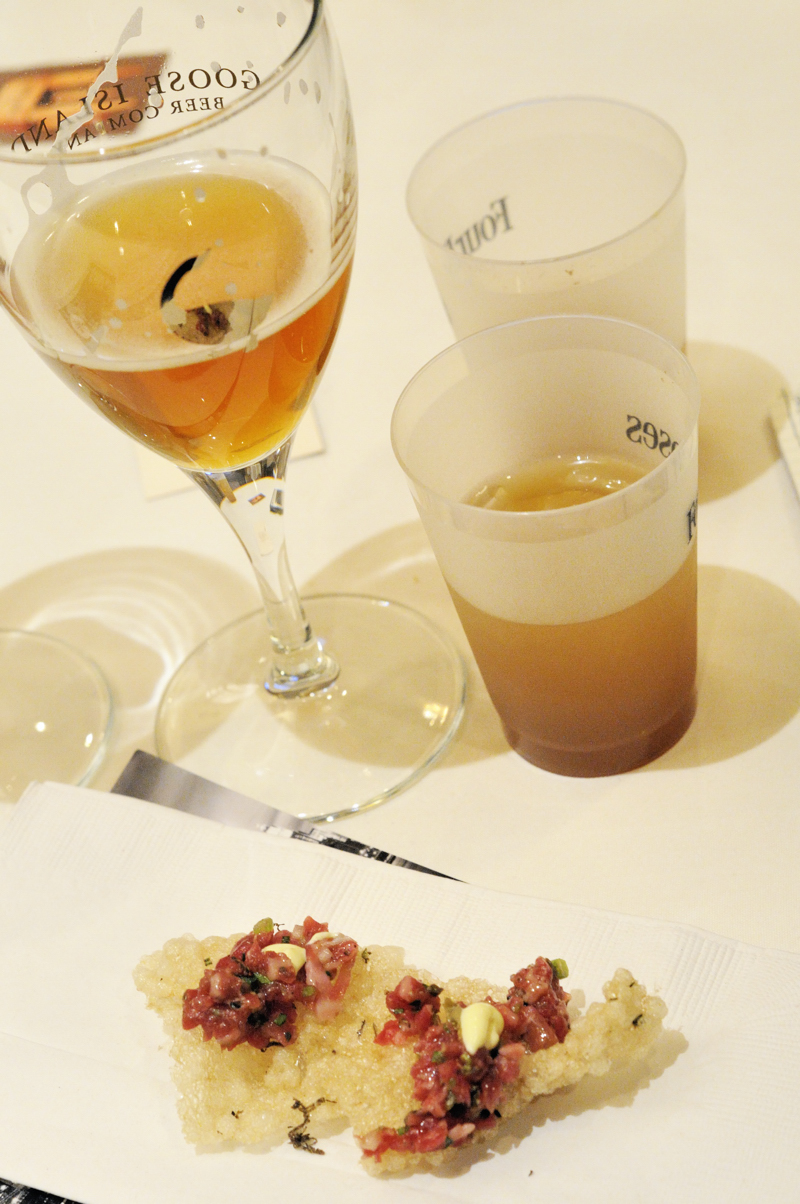
Rib Eye Tartare with Truffle on Pork Cracklin’ from Del Posto – Paired with Lolita. My first bite of the night, and one of the best. The aged rib eye tartare had a sweetness and subtle fruitiness that was complementary to the sour (but not puckering) Lolita. Lolita has a big ripe raspberry nose with a mildly earthy component that worked really well with the truffle. Putting the tartare on a crispy pork cracklin’ was an excellent textural counterpoint to the beef.
Pairing #2: Pork Paella with Matilda

Paella de Cerdo From Tertulia – Paired with Matilda. Yes, this was an intensely salty dish. Somehow though, the intensely salty pork worked with the nice char on the outside of the meat, and was kept in reign when paired with Matilda. The best thing about Matilda is that it features a pleasant Belgian yeast profile while retaining a nice round body and malt component. The maillard-heavy toasted malt flavors worked really well with the charred pork. The pork was quite fatty and decadent, which the effervescent nature of Matilda cleaned up with ease. The almost dirty-rice-esque ‘paella’ was loaded with bits of organ meat giving it a mineral-rich character that worked well with the peppery yeast character in the beer. A touch more dryness in the beer would have made the pairing even better.
Pairing #3: Duck Charcuterie with Sofie
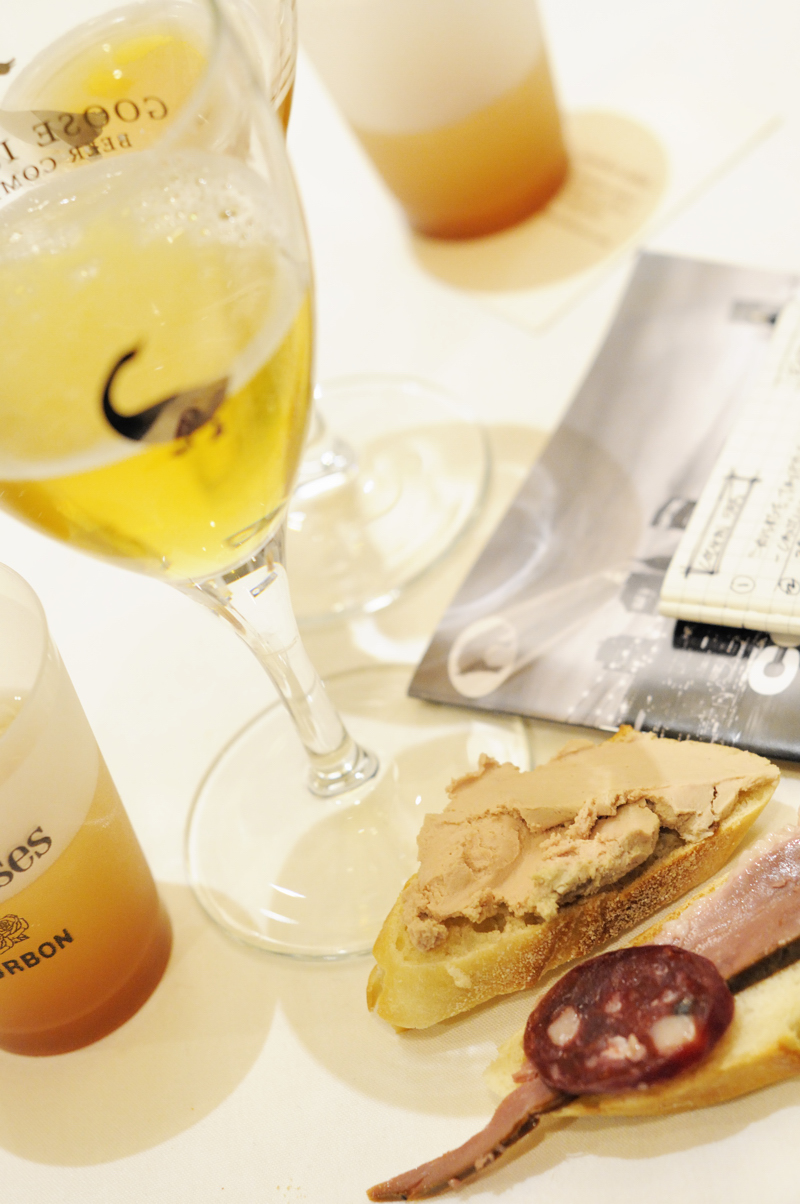
Duck Charcuterie (Torchone de Foie Gras, Rillete, Salami, Smoked Breast) from Hudson Valley Foie Gras – Paired with Sofie. I have a soft spot for duck, especially duck charcuterie. The products offered up from Hudson Valley Foie Gras were top notch and I especially enjoyed the Foie Gras. Smeared on a simple slice of baguette and washed down with Sofie, the pairing was divine. Sofie, with it’s somewhat austere dryness and prickly carbonation, cut through the fatty foie like a knife, daring you to consume another bite. The earthy and luscious liver worked extremely well with the slightly fruity and somewhat peppery yeast character in the beer. The malt in Sophie is minimal, but has a subtle pilsner malt sweetness that complemented the inherent sweetness in the foie without dominating it.
Cheers to Goose Island
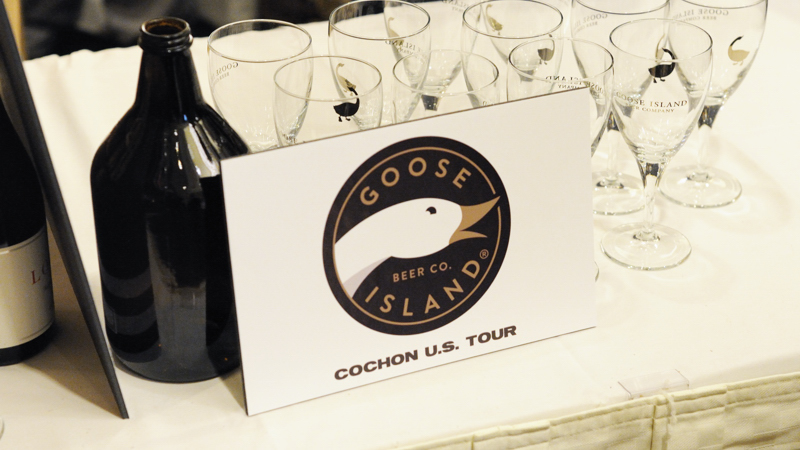
I would be remiss to not thank Goose Island for the complimentary media badges they offered my wife and myself allowing us to attend the event. Goose Island has taken a lot of flack in the past couple of years following their purchase by AB InBev. I tend to limit my judgment to their beer and their actions in regard to their customers and brewing peers. The beers they brought to the event were well-made and tasty. Equally as impressive was what appeared to be a genuine eagerness to elevate food and beer pairings to the point that they are on par with wine in the culinary circles.

A multi-knife hip-holstered butcher, a dude really digging said butchery, and a Tom Colicchio cameo all in one. Photo by Jessie Quan.
Gratuitous food porn outtakes.
- Some delicious well-aged prosciutto.
- Pork pie and mini burger from Market Table.

